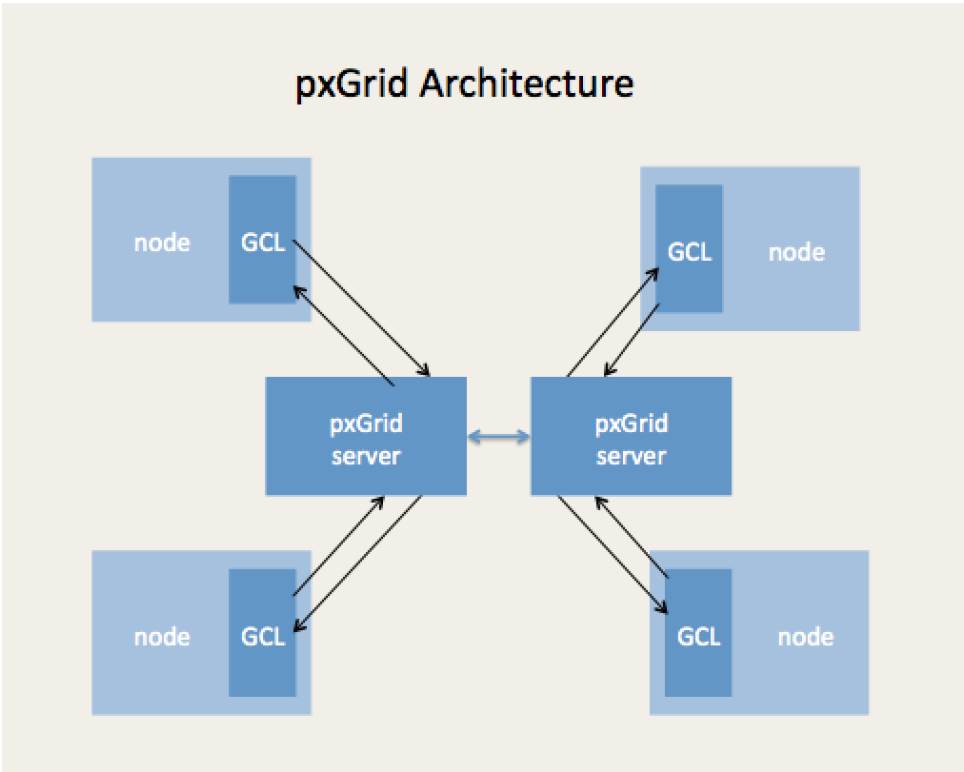Concepts
Architecture
At the heart of pxGrid is a server and participating nodes as shown in the pxGrid architecture overview.

Nodes typically reside on separate hosts, but within the same network. Nodes can connect to any of the pxGrid servers in a cluster, which is typically a 2-node cluster. Each node goes through authentication, registration, and authorization to communicate over pxGrid. Each node establishes itself as a provider or consumer of capabilities, which are information channels or topics for sharing contextual information. The pxGrid server provides message routing and control based on the context data being shared and a participating node's authorization. Queries, notification, and bulk download of the context data is supported. For bulk download, depending on the context, pxGrid can establish an out-of-band channel.
Nodes don't communicate directly with pxGrid. Instead, nodes make programmatic calls to the Grid Client Library (GCL) that in turn connects and communicates with pxGrid. Currently, Java and C/C++ versions of the GCL are available. Support for other languages is expected shortly. Check with your Cisco contact for details.
Depending on the use case, one deployment may only have a few nodes, while others may have thousands. pxGrid is designed to scale upward.